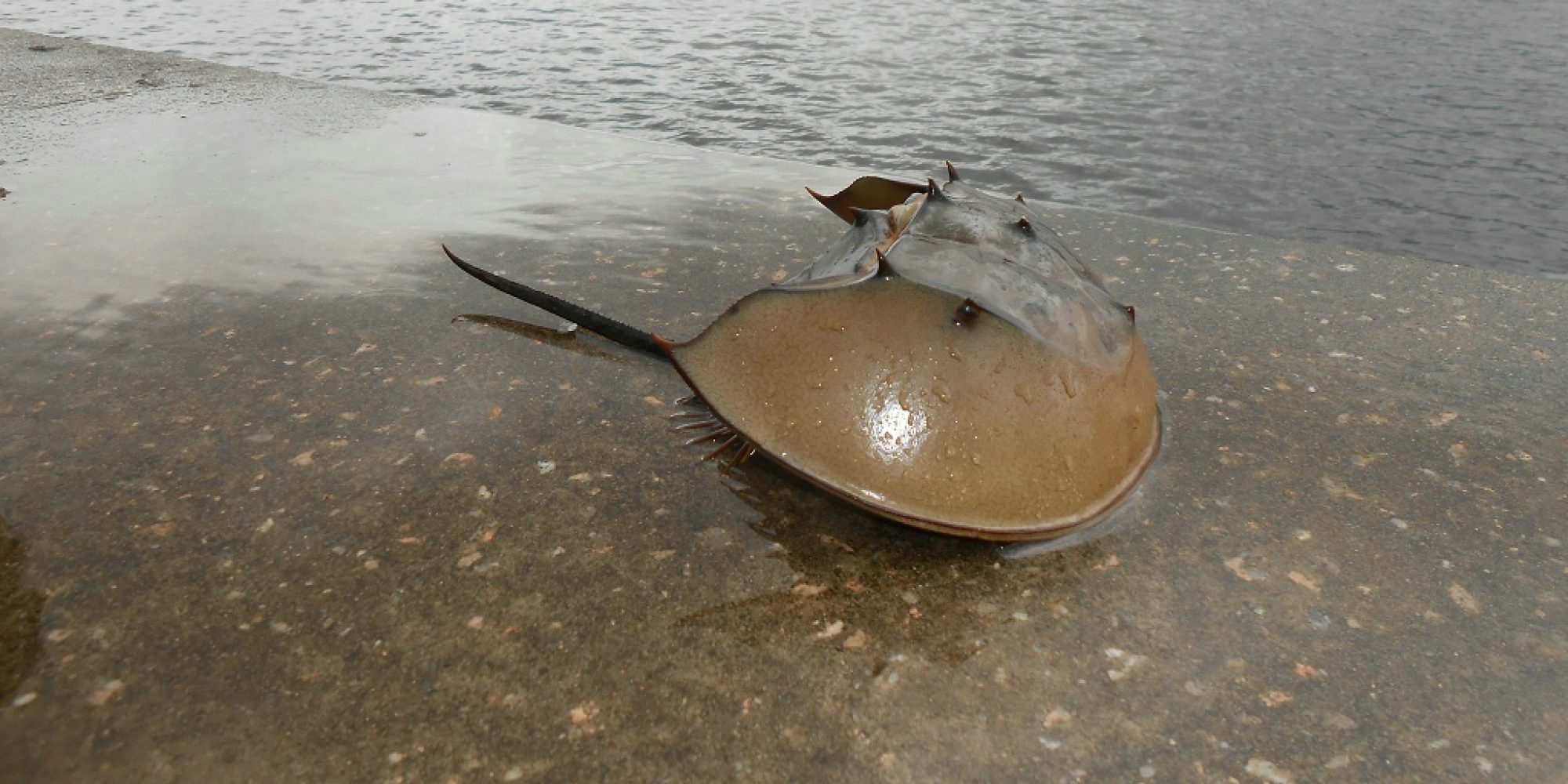(Story also covered in: CUHK, Sing Tao, Sina, Wen Wei Po, Yahoo)
A team of researchers at The Chinese University of Hong Kong (CUHK) led by Prof. Jerome Hui at the School of Life Sciences has recently investigated the three genomes out of the four extant horseshoe crabs, including the two of the four that can be found in Hong Kong. They discovered that ‘Whole Genome Duplication’(WGD), a rare situation of evolution that was believed tohappen only in the vertebrate ancestors, occurred in all three investigated horseshoe crabs. The findings have recently been published in the leading ecology and evolutionary biology journal, Heredity, which is also the official journal of the Genetics Society in the UK.
Horseshoe crabs have always been an enigmatic animal attracting public attention, given their appearance. They can be most readily seen in the tanks of seafood restaurants in Sai Kung, Hong Kong. Although the horseshoe crab is named ‘crab’, it is not actually a crustacean like true crabs, shrimps, or lobsters, but, in fact, more closely related to scorpions and spiders. The earliest horseshoe crab fossils can be dated back to about 480 million years ago, and there remain only four extant horseshoe crab species in the world (three in Asia and one in America). Hong Kong is fortunate to be home to two of these extant species.
Understanding how organisms evolve into so many different forms is always a central question in biology. In animals, WGD is a major event that happened in the vertebrate ancestors. WGD, as its name states, is a process in which the genetic materials get doubled. This is a rare occurrence. For example, if a human embryo gets double its genetic materials, this will usually prove lethal. On the other hand, if somehow the organism can withstand such event, it provides additional genetic materials for the organism to evolve. From what WGD has demonstrated in the vertebrates, it has long been postulated that this is the genetic mechanism that contributes to the evolution of vertebrates.
The research results suggest that extant sexually reproducing invertebrates can also have WGD via unknown genetic regulation and mechanism, which contradicts the long held view that only vertebrates can do so. Professor Hui said, ‘In terms of evolutionary biology, we can now prove that the differences between invertebrates and vertebrates are not solely due to WGD. More importantly, the question now becomes, how come horseshoe crabs can undergo WGD while other invertebrates cannot? This study is just discovering the tip of the iceberg.’
Professor Hui said, ‘This discovery is kind of unexpected. Originally, one of my students working on the final year project (who now becomes the co-first author of the paper) was just trying to investigate several genes in the horseshoe crabs. Instead of finding single-copy of them, several copies can be obtained from many of them. To find out whether this is something strange happening to the genes being investigated or indeed due to WGD, we then utilised the next-generation sequencing to reveal the draft genomes of the three horseshoe crabs. Given all three of them have multiple copies of different sets of genes, we then came to the conclusion that WGD happened in the extinct ancestor of horseshoe crabs.’
This discovery also has far reaching implications for conserving the horseshoe crab biodiversity. ‘We cannot simply make a policy to protect and conserve an organism just because of its appearance. There must be a convincing scientific reason supporting it. Our study now provides a new dimension into and reason for the conservation biology of the horseshoe crabs both locally and worldwide.’
Professor Hui and his team at the School of Life Sciences, Simon F.S. Li Marine Science Laboratory, and The State Key Laboratory of Agrobiotechnology at CUHK are now working hard to decipher the fundamental genetic mechanism in these unique animals.

